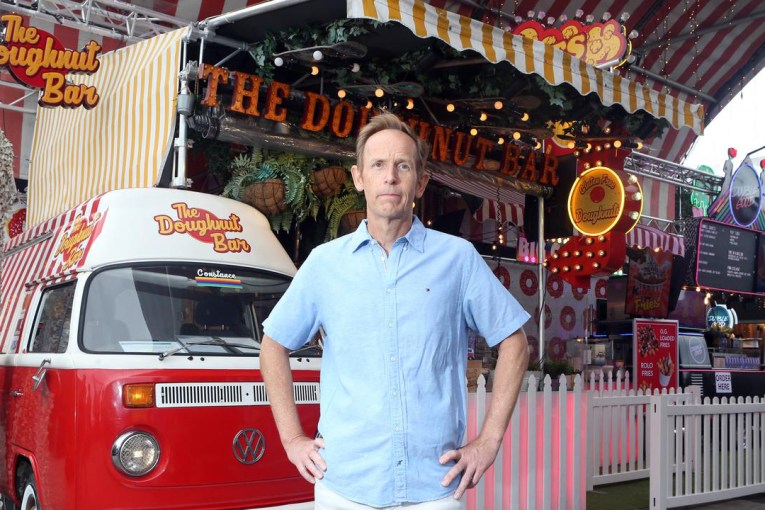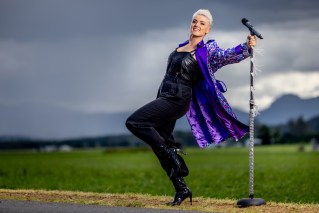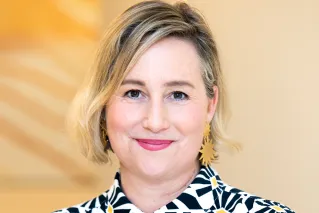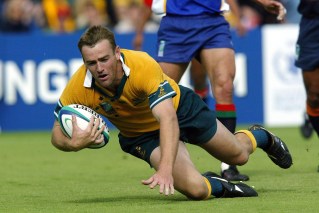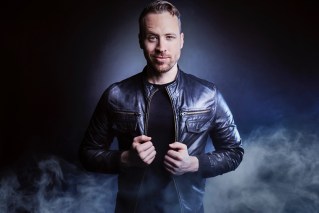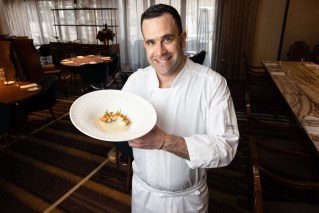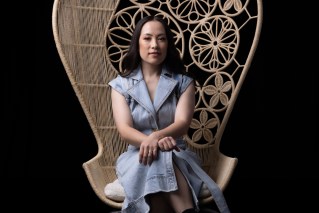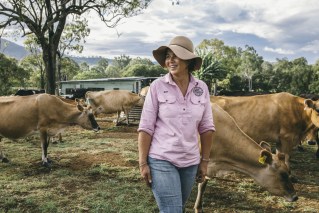‘A great stadium is a storehouse of memories’: Extract from Joe Gorman’s Heartland
In the first of our Summer Reading series of book extracts, Joe Gorman measures the cultural impact of the Lang Park transformation in his celebrated book Heartland: How Rugby League Explains Queensland.
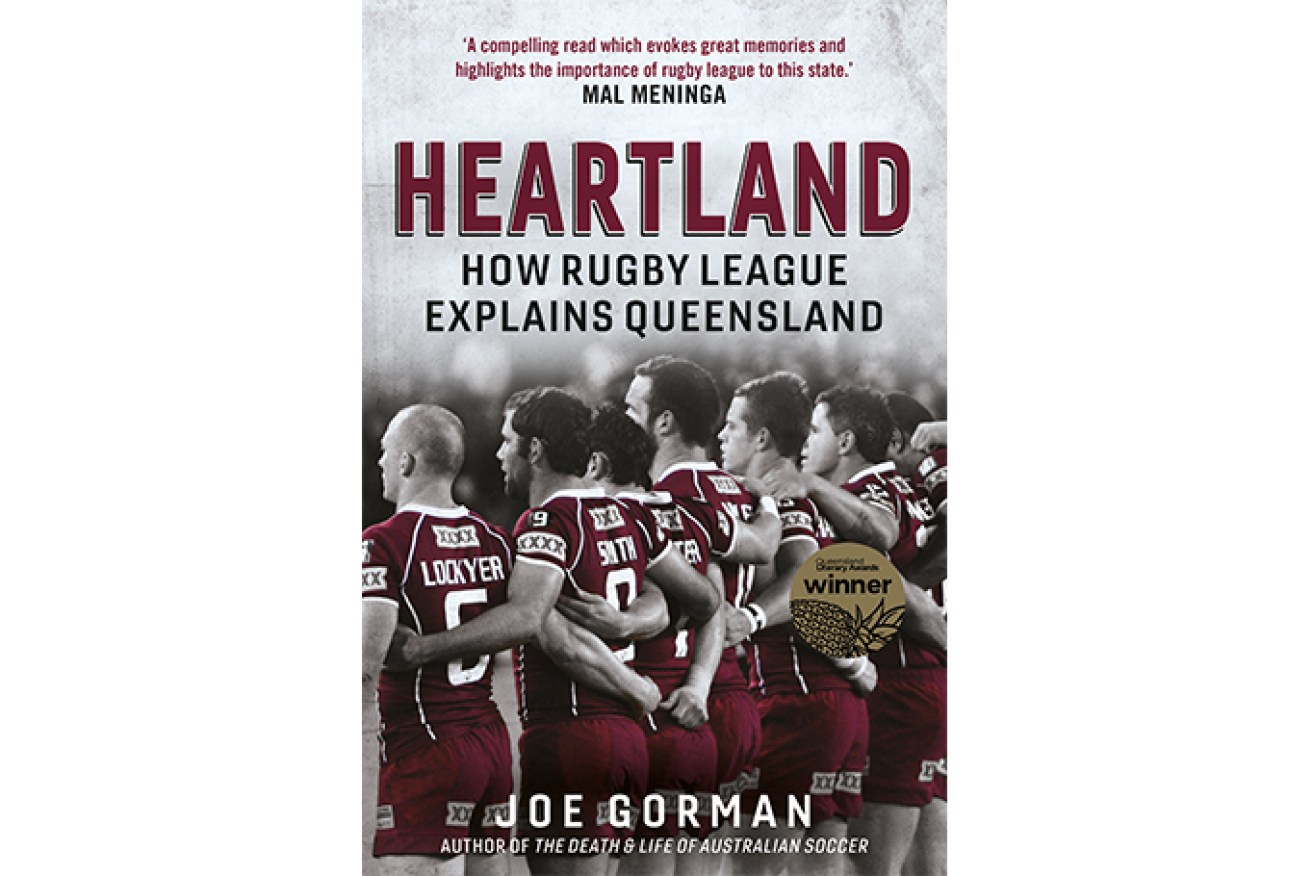
Heartland: How Rugby League Explains Queensland, by Joe Gorman (UQP, 2019, available now).
From the postwar period to the beginning of the 1990s, Brisbane had struggled to reconcile two visions of the city. There was the ‘big country town’ Brisbane – the city of old timber Queenslander house on stilts, of subtropical plants and winding creeks – a comfortable but conservative collection of suburbs once described by novelist David Malouf as ‘quite simply the most ordinary place in the world’.
Then there was the Brisbane of the future – a city of brick veneer homes, air-conditioned shopping malls, and gleaming skyscrapers rising from the CBD. It was this vision, first put in motion by former premier Joh Bjelke-Petersen and his ‘Minister for Everything’, Russ Hinze, that favoured growth and enterprise over environmental and heritage concerns.
Since his election in 1991, the lord mayor of the Brisbane City Council, Jim Soorley, had worked to reshape Brisbane into Australia’s most liveable city. As thousands of interstate migrants continued to pour over the border, liveability, he felt, would be Brisbane’s comparative advantage to the hustle-and-bustle of Sydney and Melbourne.
The task for the council and for the state government was to resolve the tension between commerce and sustainability; to bring forth a city that was modern and progressive without losing those historic qualities that made it distinctive. The looming battle over the redevelopment of Lang Park was, in many ways, symbolic of these competing visions of Queensland’s capital city.
For almost 100 years Lang Park had grown with Brisbane – from the suburban parkland of the 1900s, to Queensland’s home ground following World War II, to a site of national significance in the 1980s and ’90s. During that time it had provided the stage for Wally Lewis, a lead actor in Queensland’s cultural renaissance. ‘I can guarantee that I stepped onto Lang Park more than any other player – I’d go pretty close to saying in rugby league history,’ Lewis later recalled. ‘Both of my grandparents lived within 300 metres of the ground. We used to go over there, jump the fence – which was only about five- foot high in those days – and we’d run over there and have a good time kicking the footy around. It was a special place.’
And yet, as much as Lang Park’s community feel and accessibility had been part of its charm, by the dawn of the new century Brisbane needed a larger stadium that could accommodate several sporting tenants, host large concerts, and attract international events.
For the Brisbane City Council it was a risk: why cram a super-stadium into a dense residential area, when it could be built elsewhere? And what was wrong with ANZ Stadium, which was in an out-of- the-way suburb on the southside of the river, and which they had already invested in heavily with the Broncos? On Tuesday 6 March 2001, after years of discord between Mayor Soorley and the state Labor government over stadium policy, the council finally approved the proposed redevelopment of Lang Park.
With Game I of the State of Origin series just two months away, the decision alerted people to the fact that this would be Lang Park’s final big-time rugby league fixture. Already there was enormous pressure on Queensland to right the wrongs of the previous series’ whitewash. Now, the players were saddled with the added responsibility of farewelling Lang Park with a victory.
By late afternoon on game day, the Caxton Hotel, located 500 metres up the road from Lang Park, was awash with Fourex beer, Bundaberg rum, and maroon jerseys. There were jeers for The Footy Show host Mario Fenech, who was dressed in the blue of New South Wales, and cheers for the premier of Queensland, Peter Beattie. The crowd were waiting, as usual, for a bus.
For two decades, it had become an annual tradition for drinkers to line Caxton Street and hurl beer cans and abuse at the New South Wales players as their bus drove past. Everyone loved it – this was rugby league at its most primal, a throwback to the old days of hard-scrabble tribalism. ‘I’m not sure about the health and safety of everyone through Caxton Street in those days,’ admitted Kevin Walters, ‘but it was just amazing. The bus virtually had to slow to a crawl to get through, and the crowds would just bang on the side of the bus.’
As kick-off approached, however, there was still no bus. News filtered through to the restless crowd that police had diverted the convoy to avoid the mob. Tonight, it seemed, everyone would be saying goodbye to the running of the buses as well as Lang Park. Following years of turmoil in the game, this series felt to many like the end of an era.
Against a New South Wales squad stacked with representative talent, Wayne Bennett had selected ten rookies. Among them was Petero Civoniceva, a late-blooming 24-year-old prop forward from the Brisbane Broncos.
As a boy attending State of Origin during the 1980s, Civoniceva had sat on the Milton Street terraces and fell in love with the idea of representing Queensland. Now, as he ran out of the tunnel to make his debut, he cast an eye towards those terraces. ‘It was one of those moments I’ll never forget,’ he said.
Civoniceva took the third hit-up of the game and crashed through a would-be tackler, setting the tone for a dominant display by the home side. Queensland scored three tries in either half to win by 18 points – their biggest winning margin in 12 years.
The drama and emotion of Game I illustrated why Lang Park needed to be preserved, and the immense task that lay ahead for the architects responsible for its redevelopment. As much as players and commentators spoke about its carnal atmosphere, Lang Park’s deep emotional value was built on continuity.
A great stadium is, at essence, a storehouse of memories, and each of the ten rookies who ran through Lang Park’s tunnel and out onto that sacred strip of Brisbane turf knew they were literally following in the footsteps of Artie, Wally, Mal, Choppy, Jacko, Alfie, and Gilly. That meant something. And it imbued those young men with a sense of great purpose and responsibility. ‘It was the holy grail – the ultimate – to be at Lang Park,’ remembered Civoniceva. ‘So much of my history in falling in love with rugby league was all around that field, seeing the great games.’
While many Queenslanders looked forward to returning to a rebuilt stadium in a couple of years’ time, a group of local residents were concerned that the transformation of Lang Park would totally colonise their suburb. Their fears were well-founded: Lang Park had historically been a walk-up ground with little surrounding space for traffic or carparks, and the trend in Sydney and Melbourne was to build new stadiums in designated precincts, far away from residential areas.
Fearing interminable delays and court battles, the minister for state development, Tom Barton, called in the project under the Integrated Planning Act – in effect blocking the right of residents to appeal in the Planning and Environment Court. Outrage ensued. The state opposition leader compared the decision to ‘the dark old days of Russ Hinze and Joh Bjelke-Petersen’, while the Petrie Terrace Residents Association called it a ‘return to the Joh era of government arrogance’.
Although the politics might have been reminiscent of the Bjelke-Petersen era, the results would be rather different. In the past Queenslanders had been appalled by the demolition of heritage buildings such as the Bellevue Hotel and the Cloudland Ballroom. But the redevelopment of Lang Park, under the guidance of architect Alastair Richardson, would be a resounding success. When the new stadium opened its doors to the public, journalist Bruce Wilson reflected on the changes visited upon his childhood football ground.
‘When it was empty,’ he wrote, ‘I walked around my old Lang Park – or Suncorp Stadium as we now must call it – and knew that if a sporting stadium should speak for its city, this one will do fine.’
Extracted from Heartland: How Rugby League Explains Queensland by Joe Gorman (UQP, 2019, available now).
